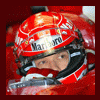В архиве
Эта тема в настоящий момент находится в архиве и закрыта для публикации сообщений.

Project CARS (Community Assisted Racing Sim)
Автор:
D.man, в Сим-рейсинг
Recommended Posts
-
Недавно просматривали 0 пользователей
Ни один зарегистрированный пользователь не просматривает эту страницу.
